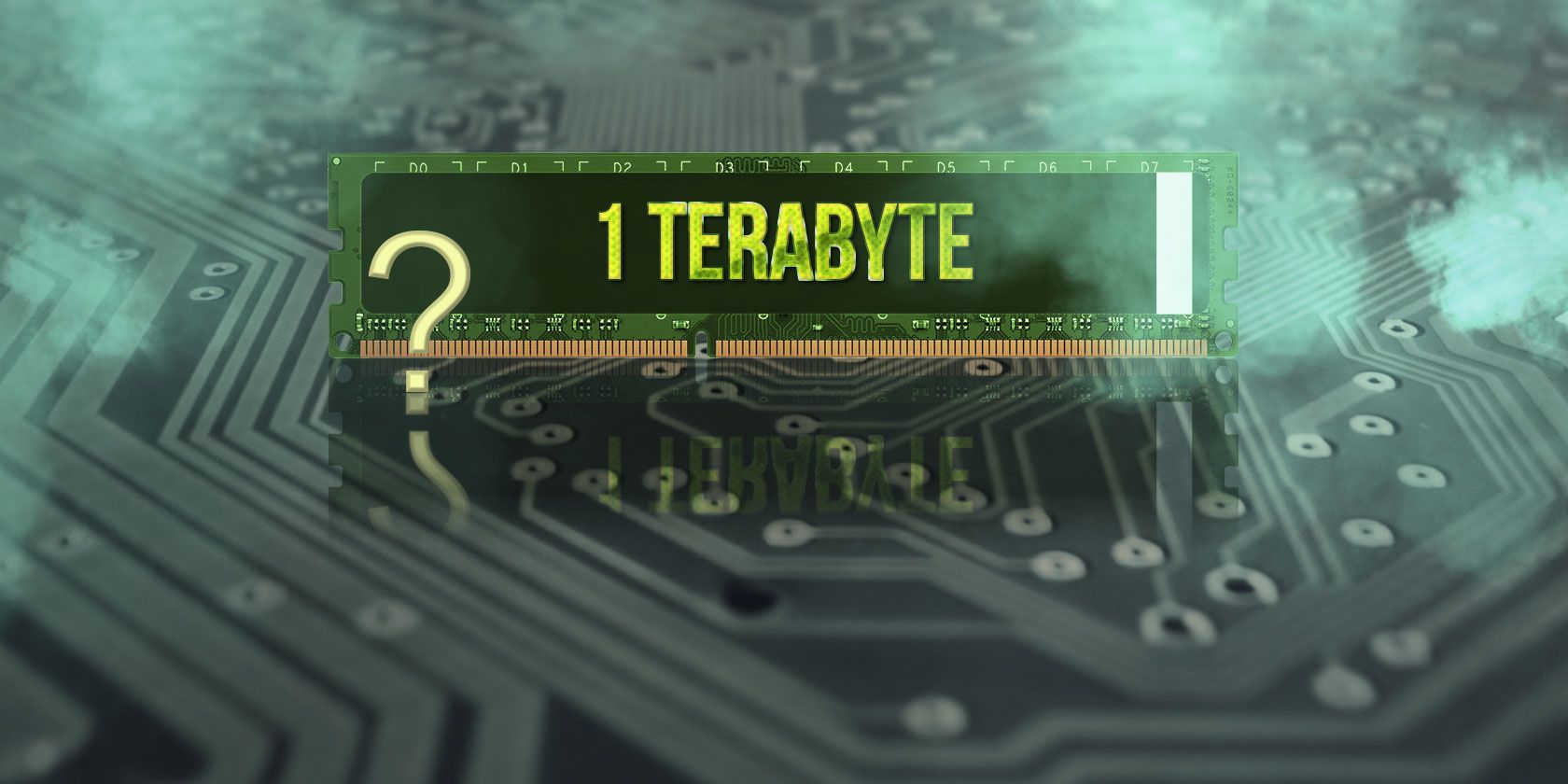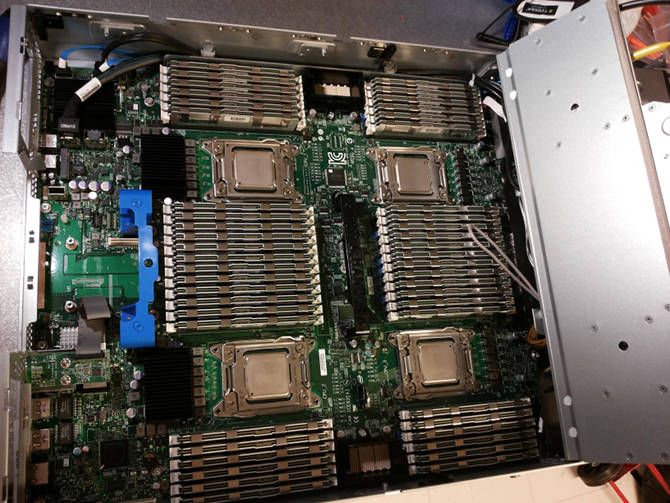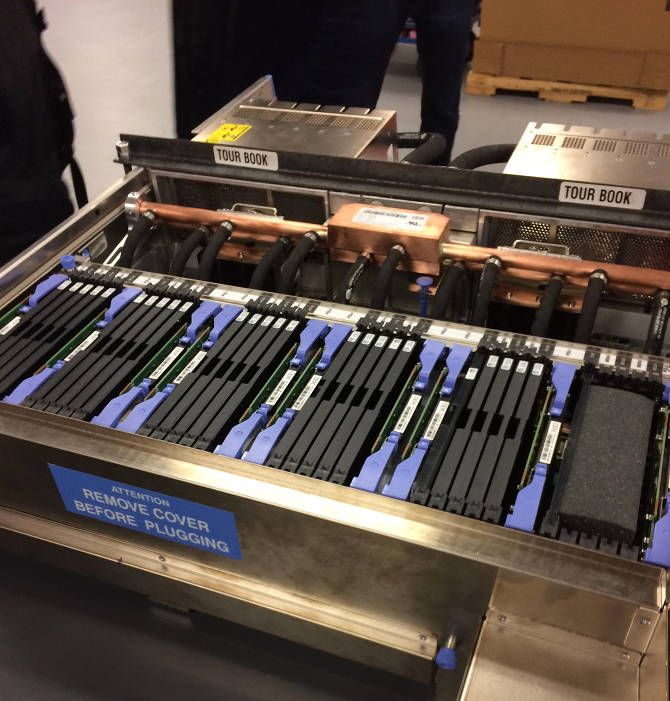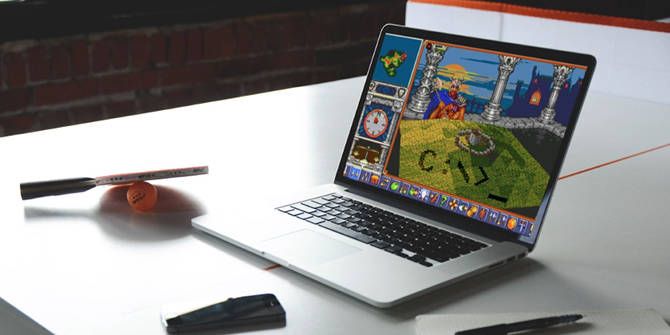How much RAM does your system have? A top-of-the-line workstation could have 32GB, while a cutting-edge PC might hold 64GB. The average computer today is closer to 8GB, while an old laptop may only have 2GB or less. None of these come close to 1TB of RAM!
Over a decade ago, you'd be well off with around 128GB of storage. Today, you can easily find hard drives that are 16TB or larger. Will we see that pace of growth in RAM as well? While this is uncertain, we can consider what someone could do with 1TB of RAM today.
What Does 1TB of RAM Look Like?
You may have seen this image making the rounds on social media:
This shows a server with 16 memory banks, each one outfitted with three memory modules: one 32GB stick and two 16GB sticks. That means 64GB per bank, which comes out to 16x64GB = 1,024GB of total RAM.
However, this image is several years old. As you'd expect, servers with 1TB of RAM are more commonplace these days as costs fall. And as individual sticks of RAM grow larger, you don't need as much physical space to hit 1TB.
Here's an example of a more modern system from 2017 with 1TB of RAM:
How much would a system like this cost? It's hard to say, because most 16GB and 32GB RAM sticks are made for server specifications and can't be used in regular desktop systems.
For comparison's sake, at the time of writing, the 2x32GB Corsair Vengeance RGB Pro DDR4 RAM costs $270 on Newegg. You would need to buy 16 of these to reach 1,024GB (1TB), which would cost about $4,320.
For another angle, the most RAM that Apple offers in a Mac Pro is 1.5TB (12x128GB). This costs an extra $25,000 to add to your system, which is obviously more than the cost of the RAM itself.
But even if you could afford it, desktop systems have limited RAM slots in the motherboard. Most motherboard have two or four RAM slots, while more expensive ones may have eight slots. 16 RAM slots or more reaches server motherboard territory.
So as of this writing, assuming a maximum of 32GB per stick and a motherboard with eight slots, the practical upper limit for desktop memory is around 256GB. We're still many years away from having 1TB of RAM at home.
But let's ignore that and have some fun anyway.
What You Could Do With 1TB of RAM
The good news (for us) is that RAM has diminishing returns: at a certain point, adding more RAM to a system doesn't provide much extra value. If you only use 6GB of RAM, upgrading to 64GB isn't going to make a difference.
Most computer apps don't use much RAM at all, so as long as you have enough RAM for day-to-day activities, you should be fine. But if you had way more RAM than necessary, here are some crazy computer tasks you could do.
1. Open a Thousand Tabs
With 1TB of RAM, you may finally be able to open more than 10 browser tabs! Jokes aside, there are reasons why Chrome and other browsers hog so much memory.
They have to handle all kinds of media on top of basic HTML, such as video, audio, and documents. All of these come in dozens of formats. They also have built-in interpreter engines for handling web languages, like JavaScript and others. In most browsers, including Chrome, each tab is its own separate sandbox, which requires a lot of memory overhead.
In the linked article above, we found that opening four common sites in Chrome used a little over 600MB of RAM. This means that opening 20 tabs could use somewhere in the neighborhood of 3GB of RAM.
But with 1TB of RAM, who cares? You can open thousands of tabs without batting an eye. How awesome would that be? And with smart tab management tactics, it wouldn't even bog you down.
2. Buffer Hundreds of Videos
When you stream videos on the web, the browser has to download the first few seconds before it can start playing. Then, during playback, it keeps downloading more and more of the video as a "buffer" in case your internet connection drops momentarily.
In short, buffering helps prevent stuttering.
Because all that video data needs to be readily accessible, buffered videos are stored in RAM. If you run out of RAM, it gets stored in virtual memory: a section of your storage drive that's set aside as an overflow area when physical RAM space runs out. Since your storage drive isn't nearly as fast as RAM, you'll notice a slowdown.
With 1TB of RAM, you could buffer dozens or even hundreds of videos (on YouTube, Vimeo, DailyMotion, and other sites) ahead of time to play at your leisure. Normally this is a bad idea, because loading data from virtual RAM to physical RAM is slow. But if you have 1TB of RAM, this won't ever be a problem for you.
3. Keep Every Single Game Loaded
Modern PC games load all kinds of data into RAM when starting up: textures, models, music, sounds, and other assets. Startup can be a slow process, though, because all that data needs to load from your storage hard drive.
That's why it can take a minute (or even longer!) to launch games.
With 1TB of RAM, you could launch every single game on your system and never close them. The data would stay loaded in RAM, allowing you to switch games whenever you wanted. Even if you took a break and weren't playing anything, you could keep them open. They'd be instantly available when you got back in the mood.
This also applies to other memory-intensive apps: digital audio workstations, video editing suites, high-resolution photo editing software, etc. Leave them all open all the time!
Of course, with dozens of games running, your system would run into another bottleneck eventually. The video RAM on your graphics card would eventually run out, and your CPU would struggle to keep up. But it wouldn't be a problem on the RAM front.
4. Run Many Operating Systems at Once
Did you know you can run operating systems within operating systems? These so-called virtual machines are possible through the magic of emulation and virtualization.
For example, running macOS in a window on a Windows PC is totally doable. You could also run a second copy of Windows within Windows, or Windows within Linux.
There are many reasons to use virtual machines, such as testing out a new operating system inside a secure sandbox. Check out our guide to VirtualBox for everything you need to get started.
The main problem with virtual machines is that each one uses up a portion of your system's resources. On most systems, RAM is one of the worst limiting factors when running virtual machines. With 1TB of RAM, this is no longer a concern. That much RAM lets you spin up dozens of virtual systems without impacting overall system performance.
5. Turn It Into a RAM Disk
A RAM disk, or RAM drive, is exactly what it sounds like: a virtual drive on your system that uses a portion of your RAM for storing data. Setting up a RAM disk is as easy as installing SoftPerfect RAMDisk on Windows (or equivalent software for Mac or Linux).
RAM modules are far faster than storage drives, including SSDs. A modern SSD can transfer data somewhere around 550MB/second, while RAM modules can go up to 17GB/second or more---several orders of magnitude faster than SSDs!
The RAM you set aside for the disk becomes unavailable for normal RAM use, but if you had 1TB of it, that wouldn't be an issue at all. However, RAM disks do have a couple of other downsides; learn more in our overview of RAM disks.
Would You Ever Use a Terabyte of RAM?
It's too bad we won't have 1TB of RAM available for home use anytime soon. But the good news is that we really don't need that much. For day-to-day activities, an 8GB system should more than suffice. If you're a power user, aim for 16GB. To prepare for the future, get 32GB, especially if you play new games or run dozens of apps at once.
For now, you should just maximize whatever RAM you already have, and consider upgrading when you get your next PC.





